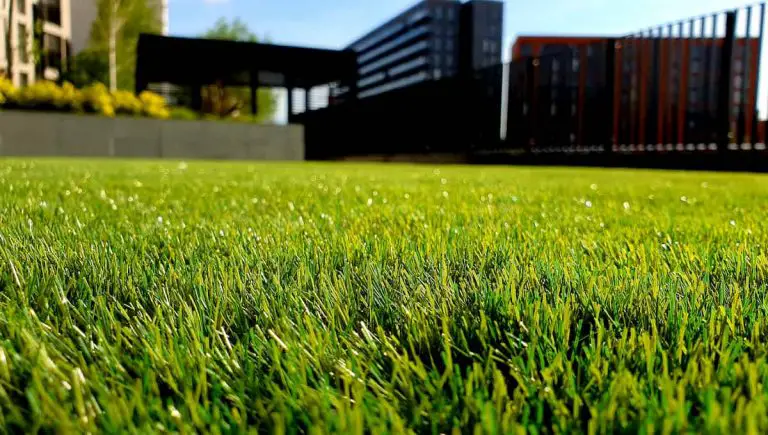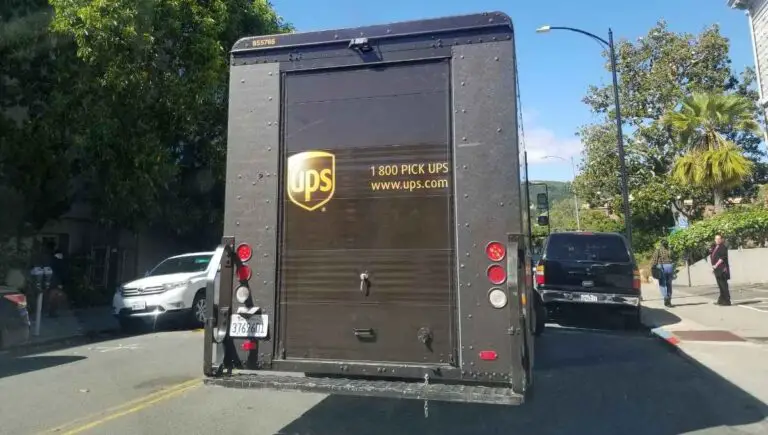Can You Split a Shared Driveway? (Here Are the Rules)

So, you bought a property with a shared driveway. While this may be charming in theory, unfortunately, it is not always ideal in real life. Thankfully, it doesn’t have to stay that way. If you want to split your shared driveway, you first have to ask yourself if you can legally split a shared driveway.
You can split a shared driveway as long as all parties have a way to enter their respective properties. Check your local and state laws to ensure you know your legal rights on splitting up the land. If you have an easement agreement, check for the legalities of splitting the driveway.
Sometimes, sharing a driveway is perfect for all parties, but other times, it’s more headache than heartwarming. When the headache doesn’t go away, it’s time to consider splitting up the driveway.
This may seem like a daunting process, but with the answers to the most common questions listed below, you’ll be on your way to peaceful coexistence with your neighbors in no time!
This post contains affiliate links from Amazon and other stores. This means Yard Blogger may earn a commission if you make a purchase using any of our links. Please refer to our full affiliate disclosure policy for full details.
Here’s a Quick Pro Tip!
Thankfully, there are many instances that allow you to split a shared driveway! If you fall into one of these categories, you now have to start thinking about how you’re going to split your driveway.
Here are some recommended ways to split your driveway:
1. A White Picket Fence – Yet another opportunity to achieve your American Dream
2. Large Planters – Such an aesthetic way to add a division
3. Chalk – A simple and temporary option before you choose a more permanent option
The Basics of a Shared Driveway Situation
Before we delve into the legalities of splitting a driveway, let’s start with some common questions about shared driveways and the unique issues they can present.
What is a Shared Driveway?
A shared driveway is one section of land that serves as an entrance for two or more parcels of land. Shared driveways are standard in city and suburban areas, where land tends to be closer together, and driveway space is limited.
Often, both parties can claim part of the land the driveway rests on. Other times, one party can only access their property by going through someone else’s.
With the latter, an easement is usually drawn up to protect all involved parties.
Who Owns a Shared Driveway?
You can find out who owns a shared driveway by checking the deed to the land. Then, check with your local and state governments for specific laws on shared driveways or easements. Each state typically has its own ordinances.
For example, Connecticut has a House Bill regarding the legal statutes concerning the maintenance of private easements and rights-of-way.
Sharing a driveway is not always a 50/50 split. For example, you may find that you own 75% and your neighbor owns 25%.
They will most likely have a legal right to use the driveway to access their property. The terms of their driveway use will be available in the deed, title, or easement agreement.
Whoever owns it, all parties in a written agreement to use the shared driveway may find themselves responsible for the maintenance and upkeep of the property. Check your easement for details!
You might also enjoy our post on How to Stop Your Neighbors From Parking in Your Driveway
What Are My Rights With a Shared Driveway?
You have the right to use your driveway, park in your designated parking area, and utilize your portion as you wish. Your state may have specific examples of your rights, depending on where you live.
You can also find your legal rights to the driveway in your title.
Additionally, if you have signed an easement agreement (a document that states who has the right to use the shared driveway), your rights will be listed there.
Keep an eye out for more information on easements later in the article!
What Are Some Common Problems With Shared Driveways?
A widespread problem with shared driveways is that people aren’t perfect, and sometimes they get greedy. It can get annoying, whether it’s encroaching on your space or not cleaning up after themselves.
Here are some other common problems. How many do you find relatable?
- Responsibility – It’s snowing, and you cleaned the driveway last time. Is it your neighbors’ turn, or because you did it last time, is it now your responsibility?
- Boundaries – Your neighbor is having a party, and your parking space has been ‘borrowed.’ It’s the third time this month.
- Space – You need to change the oil in your car, but to have the space to do so, you need to use part of your neighbors’ parking space.
- Costs – It’s time to repave the shared driveway. You want to split the cost 50/50, but the neighbor thinks they should only pay 25% as they only own 25%. You disagree with this as you both use the driveway about the same amount.
- Aesthetics – It’s spring! You want to plant some lovely flowers, but your neighbor is allergic.
While most of these issues seem small at first, if they aren’t rectified, sooner or later, somethings gotta give! But, is it going to be you or them?
How Do I Deal With a Neighbor Who Doesn’t Respect Our Shared Driveway?
If your neighbors aren’t respecting the shared spaces, it doesn’t hurt to have a conversation with them first before seeking legal action. Then, if the problem is fixable, try to fix it!
Obviously, this will not always work, and if more action is needed, make sure to know your rights. Check your title and any easement paperwork, and be ready to show your neighbors what you’re entitled to, just in case.
If you have an attorney, check with them to ensure you know all your rights.
If nothing else works, it may be time to consider splitting up the driveway. Keep reading to find out the best ways to split up your driveway and how to go about it legally.
You might also enjoy our post on How to Legally Get a Car Towed From Your Driveway
Do I Need to Ask My Neighbor Before I Try to Split Our Shared Driveway?
It is best to discuss with your neighbors before splitting the driveway. Remember, you’ll want to maintain a positive relationship with your neighbors, not a negative one!
While you may be trying your best to put a little distance between you and the neighbors, you’ll still be next door unless they move away. Best not to burn bridges if you can avoid it!
Also, make sure you’ve checked that you legally have the right to split up the driveway and follow all local and state laws regarding splits.
Laws for a Shared Driveway
Now that we’ve covered the basics, it’s time to dive deeper into the legal side of things. Next, let’s look at some common questions surrounding the best ways to split up a shared driveway legally.
Is It Legal to Split a Shared Driveway?
Thankfully, it is legal to split a shared driveway. If you have a signed easement, as long as all parties agree, the easement can be terminated.
Additionally, most easements have a set time frame, and the clock will eventually run out. So, be sure your easement is up to date!
The best-case scenario is that all parties agree to a legal splitting of the driveway. If this is the case, you just need to sign an agreement and determine who is paying for what.
If your neighbors disagree with the idea, it will be a little more complicated. First, check your easement or deed to ensure your legal right to the driveway.
Keep in mind that if you are splitting the driveway, anyone who is part of the current easement still has to have access to their property!
What Are the Shared Driveway Rules?
The most important rule is that all parties involved must retain access to their property. This means that no matter how you split the driveway, everyone must still be able to get to their property from the main road.
The rules to a shared driveway can depend on the individuals who entered into the agreement.
But, most typically include basic right-of-way clauses to ensure all parties involved can use the driveway to access their residencies. Check your deed or easement for complete rules.
You might also enjoy our post on How to Stop Your Neighbors’ Kids From Playing in Your Yard
Are There Laws Regarding Shared Driveways?
Each state has its own listing and laws for shared driveway rules, with statutes to protect everyone involved in the shared space. Be sure to check with an attorney or your local and state laws to ensure you know your rights.
It’s important to remember the most significant rule is that if there is a signed legal document stating the rights of the landowners- what’s written is what needs to be followed.
Failure to follow these laws leaves you open to potential charges!
For example, in Michigan, a shared driveway may technically belong to one owner (the person whose property the driveway is on). Still, that owner has no legal right to interfere with the easement holder, per Northern Michigan Property Law.
How Can I Legally Split a Shared Driveway?
After discussing a split with your neighbor, you can decide how best to split the driveway. As long as all parties agree with the split, just remember to get the agreement in writing before you start the project!
Some common examples of ways to split a shared driveway include:
- Chalk – It’s not just for kids! If you and your neighbors need a reminder of where the physical boundaries of a property are, this may be the way to go!
- Fencing – A fence provides a boundary line and can be helpful if you want to prevent people and animals from wandering over their property lines.
- Planters – If you want a physical boundary but don’t want to go the fence route, consider planting flowers or a garden (if space allows) between the newly split driveway to ensure the boundary lines are respected.
What Is a Shared Driveway Easement?
Easements are legal documents designed to ensure that everyone can access their property from one point of entry. They protect both the landowner and anyone who needs to access their property using a shared driveway.
For example, if your house were built behind another home, you would have a driveway easement drawn up to ensure you can access your land from the main road via your neighbor’s property.
Where Do I Find My Title or Deed?
You should have received a copy of your title and deed when you purchased your deed. But, just in case you can’t find it, remember that deeds and titles are public documents. You can get a copy at your local recorder or property records office.
You will need your deed and title to know your shared driveway rights. If you can’t find your title or are unsure of your rights, consider checking in with your realtor or lawyer for an explanation.
How Do I Know Where My Property Lines Are?
You can find your property lines yourself by checking for boundary markers on the land itself or your deed and any existing land surveys.
Another option is to have your property surveyed by a professional who provides you with documentation on the legal boundaries of your property.
This documentation can come in handy if you need to justify a division split.
How Do I Get My Property Surveyed?
There are licensed professional land surveyors that you can hire to assess your property. They can be expensive but will be well worth it if your land rights ever come into question.
Depending on a few factors, including where you live and how large your land is, having a survey completed can cost anywhere between $200 and $1,000, so be sure to shop around for the best deal!
To get your property surveyed, contact your local professional land surveyors. Some states, for example, New York, have an Association of Professional Land Surveyors.
Make sure you check their license before agreeing to a survey!
What Are the Legal Issues About Putting a Fence Down a Shared Driveway?
If you have an easement, you legally must allow all parties access to their property. Remember, it is always best to discuss any changes or additions with the people who share your easement agreement before making changes.
If your neighbors believe their access is being denied, they will have the legal right to pursue charges if you do not allow them to utilize the shared driveway to reach their property, as per their easement.
How to Separate a Shared Driveway
You know you want to separate your space, but what is the best way to do the split? There are many options, from fencing to chalk to flowers or stones. What works best for your situation?
How Do You Separate a Shared Driveway?
You can choose how best to separate a shared driveway. It can be as simple as drawing a chalk outline down the middle or as complex as hiring a professional to redo the driveway as two separate entrances.
The most common answer lies somewhere in the middle. You may want to consider using a concrete barrier or this safety fencing to show a physical boundary at the property line.
Other options include digging a trench between the two halves or planting a garden.
How Do You Get Rid of a Shared Driveway
If you and a neighbor both have the paperwork and are willing to split the shared driveway, getting rid of it is easy. If both parties are agreeable, put it in writing.
One of the easiest (but most expensive!) ways of getting rid of a shared driveway is to buy out your neighbor! If you own all the land, you’re not sharing anything anymore!
If both properties have other access points, you can also get rid of the shared driveway without significant issues.
However, if you are planning on constructing a new driveway, check with your local and state ordinances before you start!
Can I Put a Fence up on a Shared Driveway?
You can absolutely put up a fence along your shared driveway, as long as all parties who have a legal right to use the driveway can still access their property.
If the fence has a gate, ensure your neighbors are okay with this change and can open and unlock the gate as needed.
You cannot block anyone with an easement or other binding document stating they can access their property through yours. You can still put a fence along your property line as long as it does not block their access.
You might also enjoy our post on If Your Neighbor Can Move Your Fence
Can You Build a Fence on a Shared Driveway?
If you will build a fence on a shared driveway, make sure the fence is on your side of the property line and that you are not restricting access to anyone else land. Be sure to discuss this with anyone involved in the easement.
As long as your fencing fits all local and state laws and is not blocking anyone from accessing their property, you have the right to build a fence on your side of a shared driveway.
Make sure you know where your property lines are before installing your fence.
Can I Put a Fence up Without My Neighbor’s Permission?
Each state has its own rules and regulations surrounding fencing. It is always best practice to check before you put up a fence. Regardless, it is courteous to let your neighbor know that you will be putting up a fence.
If you are going to add a fence to your property, remember the fence must be on your property, and anyone who has the legal right to the shared driveway cannot be cut off from their land.
It is still best practice to share your plans with the neighbors. As they say, good fences make good neighbors, but you still have to live next to them.
Remember, if you tell them about your plans first, they’re not as likely to be mad at you for it! Who knows, maybe you’ll be able to split the cost!
What’s the Best Fence to Put On a Shared Driveway?
There are as many kinds of fences as there are neighbors. You can find aluminum chain links, wooden, and mesh, just to name a few.
The best fence for your property depends on what you need it for. If you want privacy from nosy neighbors, consider a wooden fence.
If you just want to make sure the kids or pets don’t end up in the neighbor’s yard, chain link or aluminum or mesh will do great.
Remember, however, fences aren’t the only option. See below for more aesthetic options to split a shared driveway.
How High Can a Fence Be On a Driveway?
A general rule of thumb is less than or equal to six feet, but you may want to check with them if you are part of a Home Owners Association (HOA). In addition, each state and county has its own specific rules and regulations regarding fencing.
It is always wise to check your local and state statutes before building anything on your property. For example, in Philadelphia, Pennsylvania, you need a fencing permit if your fence is taller than six feet.
What’s the Most Aesthetic Way to Split a Shared Driveway?
One of the most aesthetic ways to split a shared driveway is to forgo the metal fence and use natural materials instead. Natural materials such as wood, stone, or plants are more pleasing to the eye than the harsh metals of chain link fencing.
If you want to split up the driveway but don’t necessarily want a massive fence in the way of your drive, consider other physical alternatives.
For example, instead of building a fence, you can use seasonal flowers or stepping stones to delineate your property line and separate the land without any height.
If you want a fence, why not make it a beautiful and aesthetic one? Amazon has a great collection of fencing materials, including this artificial hedge, which looks great and provides a physical barrier and privacy between properties.
Related Questions
We’ve talked about the basics, the laws, and the realities of splitting your driveway. But, before we wrap up, let’s talk about some other common questions!
Who Maintains a Shared Driveway?
Ideally, all parties involved would take some responsibility for a shared driveway. Whether that’s a 50/50 split or if it goes by who owns the majority of the land is an issue best discussed between the parties involved.
If your neighbors are unwilling to assist with maintenance, it is best to go back to the deed or easement to see what you are legally required to do. Be sure you can prove your claims before threatening legal action!
How Do I Tell My Neighbor to Stop Parking on My Side of the Driveway?
First, try being nice. Politely inform them about the situation. Let them know that they are taking space away from you, and it’s becoming a problem.
If applicable, remind them that they signed an agreement on sharing the driveway and that the easement states who is allowed to park where.
Suppose your initial conversation does not solve your issues. In that case, you can try putting up a physical barrier to your parking area when you are gone, assuming the barrier does not bar your neighbors from reaching their own property.
Remember, just because the easement allows the use of your driveway, parking on your side is not part of the agreement, and if they are not invited, they are considered trespassers.
If they are still using your parking area after attempting those solutions, you may have to get the law involved, though hopefully, it will not come to that!
Final Thoughts
Splitting a shared driveway sounds like it can be a headache to accomplish, but sometimes it’s the only option left when your neighbors are being unreasonable.
As long as you and your neighbor agree that something has to be done, ending an easement or making a written agreement to split a driveway won’t be too difficult.
Always be sure to check your local and state laws before building, and enjoy your newfound privacy!






